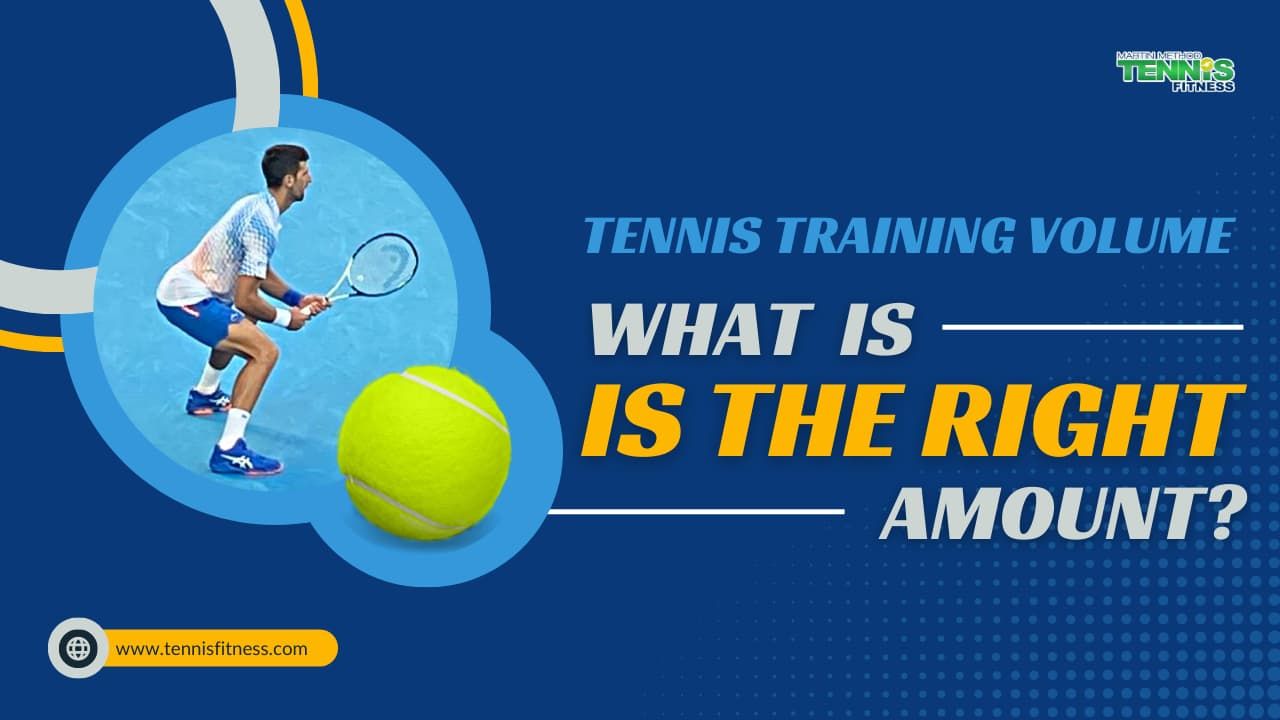Tennis Training Volume – What is the Right Amount?
Feb 01, 2023
In order to improve your tennis performance, it is important to physically work hard, but it is just as important to rest and recover hard! Vigorous, prolonged tennis exercise breaks down muscle tissue, fatigues the nervous system and overall places the body under stress. It is during the rest and recovery period that the body gets the positive physical and emotional gains (cardiovascular, strength, mentally, etc.).
If there is an overload of tennis training volume and intensity (level of energy used) with inadequate recovery time between sessions, a player will start to develop, physical, behavioral, and emotional issues. This scenario can be classified as a condition called Overtraining. Overtraining or burnout is a common problem for many athletes of all ages in many sports. It is often seen in young tennis players. Possibly due to the fact that they find it harder to communicate how they are feeling and they are not as in tune with their bodies as adults.
Parents and even coaches are often unaware of how much a child should be doing. A common problem we have found over the past 25 years as Tennis Fitness Trainers is that coaches and trainers are not aware of the volume of physical and mental loads a player is undertaking each week. Between education (school/college), tennis practice, match play, tennis strength, and conditioning training. Things add up and if these loads are not managed and understood then the situation can turn bad, this is often when injuries occur and burnout happens (constant fatigue and lack of motivation).
On the opposite side when players are not doing enough on-court training, backed up by enough off-court training (Tennis fitness training) they are susceptible to injury through a lack of strength and conditioning. If they are trying to keep up with stronger, fitter players they can easily fatigue, lose good form, and get mentally fatigued. This is not an ideal scenario either.
Working with the right volume and intensity (loading) combined with adequate recovery (at least one day off a week from any physical training or tennis exercises) will give players every opportunity to improve and minimize the risk of any tennis training injuries. Symptoms of overtraining for tennis can include; persistent muscle soreness, persistent fatigue, elevated resting heart rate, increased susceptibility to illness, increased incidence of injuries, irritability, mental breakdown, loss of appetite, mood swings, loss of motivation, loss of enthusiasm, loss competitive drive and abandonment of the sport.
For these reasons, associations like the WTA have applied age restrictions that don’t allow players to turn professional until they reach a certain age. Many international federations monitor and plan the junior players' calendars to avoid burnout. How long, intense, and often a player practices, trains, and plays tournaments is very much an individual thing. We are all built slightly differently and need to be treated differently, however, there are some boundaries that players should work within.
Tennis Training Volume
There is no generic perfect ratio. Players mature at different rates, and every player's body composition is individual. Some players are genetically robust and resilient, some are more sensitive. It is important to work out what the right balance is for each individual tennis player. Below in the table is a guideline for tennis volume and tennis fitness training volume for players.

Something we recommend doing quarterly to continually find the right balance is "playing monitoring" We call this getting biofeedback and we can use it to adjust a player's training and playing schedule. Monitor how a player is feeling on a daily basis. We encourage you to try it yourself or with a player you are helping. Write down how they feel each day for one month and then look over it. You will find some areas that may need adjusting. You can use some of the areas below to use in your monitoring process.
It's mandatory that all the players we train complete a training diary that includes the following:

You can use a scale of 1 to 5 (5 feeling extremely fatigued and sore and 1 being, feeling fresh and full of energy) once you have the records you can go back and compare the results to the volume and intensity of certain periods of the month.
Look to make changes to keep the athlete consistently around a 1-3 on the scale. Whether you are a coach, tennis conditioner, player, or parent of a tennis player it is important to get the balance right. Seek advice from qualified professionals (Coaches and Tennis fitness conditioners) and always make sure the player/s has had some form of involvement in the process of determining how long, how often, and how intense their tennis training is.
If you want to get this area right and deal with experts who can help with your planning and volume management, simply send us an email. We have a range of options to help you depending on the level of tennis, time constraints, and budget.
If you are wanting to follow a clear, specific, age-appropriate tennis training program, click on the link below for some information.
TO GET A PROGRAM WITH A PERIODISED PLAN GO HERE 👈
We have got you covered!
Team Tennis Fitness
>> Recent Blog: Goal Setting For Tennis Players



